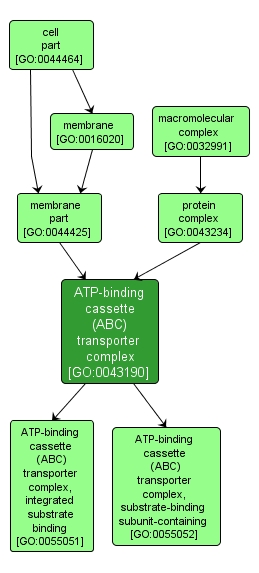| Desc: |
A complex for the transport of metabolites into and out of the cell, typically comprised of four domains; two membrane-associated domains and two ATP-binding domains at the intracellular face of the membrane, that form a central pore through the plasma membrane. Each of the four core domains may be encoded as a separate polypeptide or the domains can be fused in any one of a number of ways into multidomain polypeptides. In Bacteria and Archaebacteria, ABC transporters also include substrate binding proteins to bind substrate external to the cytoplasm and deliver it to the transporter. |














